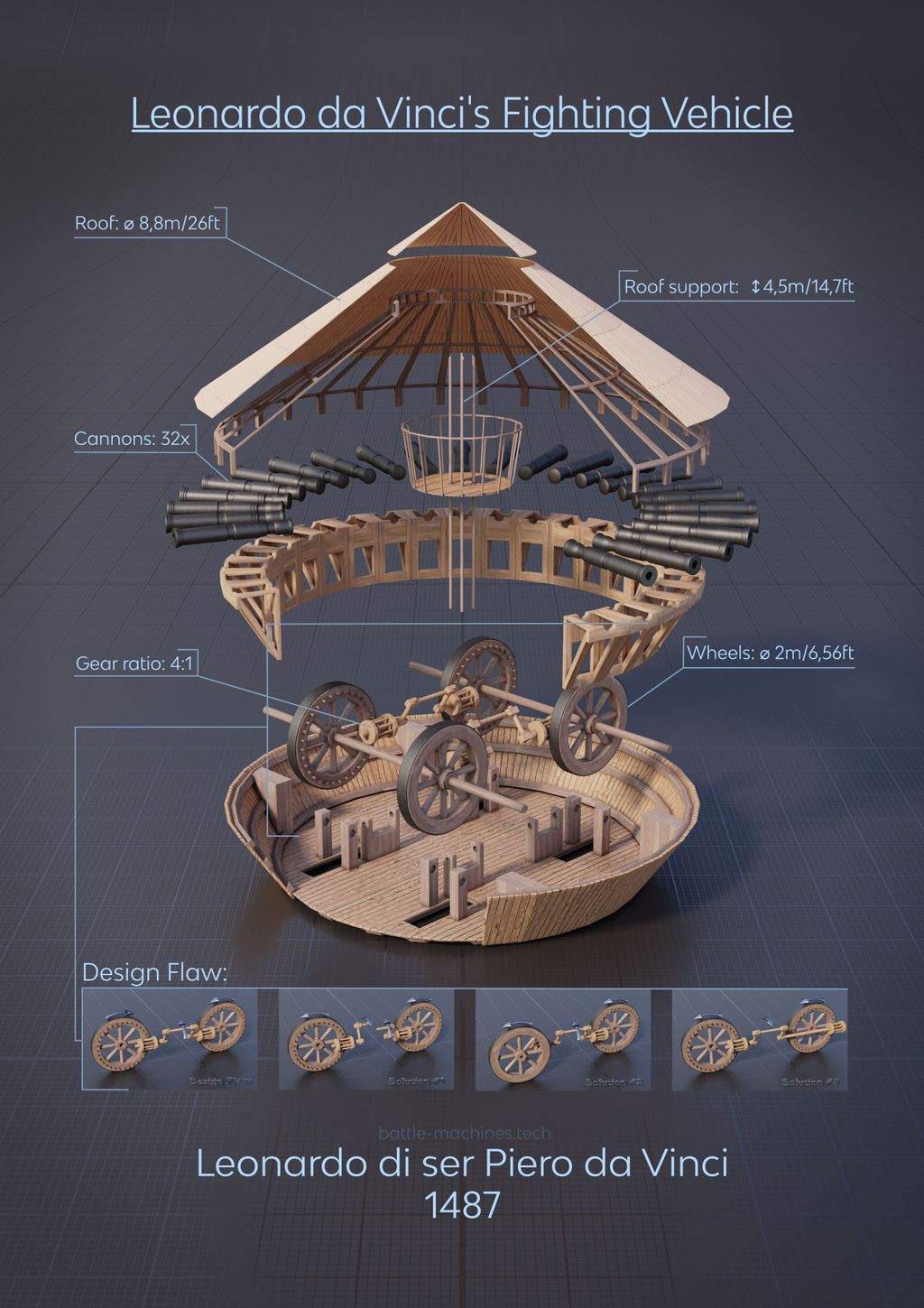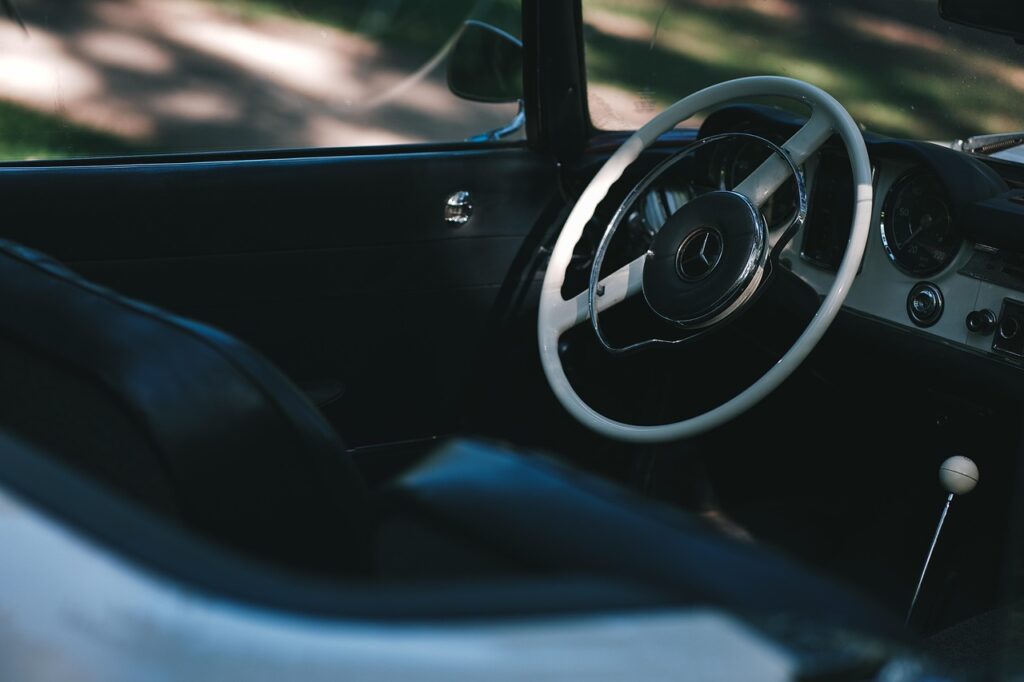The world of automobiles, often associated with innovation, freedom, and cutting-edge design, also harbors a darker history. Throughout its evolution, certain vehicles have gained notoriety not for their sleek performance or groundbreaking style, but for catastrophic design flaws that led to tragic consequences. These engineering failures represent some of the darkest chapters of vehicular design, where oversight, cost-cutting, or even willful negligence resulted in preventable deaths and severe injuries for countless individuals. From fuel tanks prone to explosion upon impact to suspension systems that caused unpredictable handling, these inherent design defects transformed otherwise ordinary vehicles into potential deathtraps on our roads.
The stories behind these flawed creations often follow a disturbingly familiar pattern. Early warning signs of danger were frequently dismissed, while internal safety concerns raised by engineers were overruled by profit motives and aggressive production timelines. Corporate denial, even in the face of mounting evidence of widespread issues, prolonged the risks to the public. These cases are more than just mechanical failures; they reflect profound ethical breakdowns within the automotive industry, revealing a disturbing willingness to prioritize financial gains over human lives and well-being.
However, there is a crucial silver lining to these tragic narratives that we must acknowledge. Each major safety scandal, despite its devastating human cost, has ultimately led to stricter regulations, improved testing protocols, and a heightened awareness of automotive safety that has undoubtedly saved countless lives in subsequent years. As we delve into these twelve infamous examples, we witness not just a series of engineering failures, but also the painful yet essential evolution of automotive safety consciousness that emerged directly from their deadly legacies. Join us as we uncover the catastrophic design flaws that etched these vehicles and components into automotive infamy, forever altering how we think about product safety.
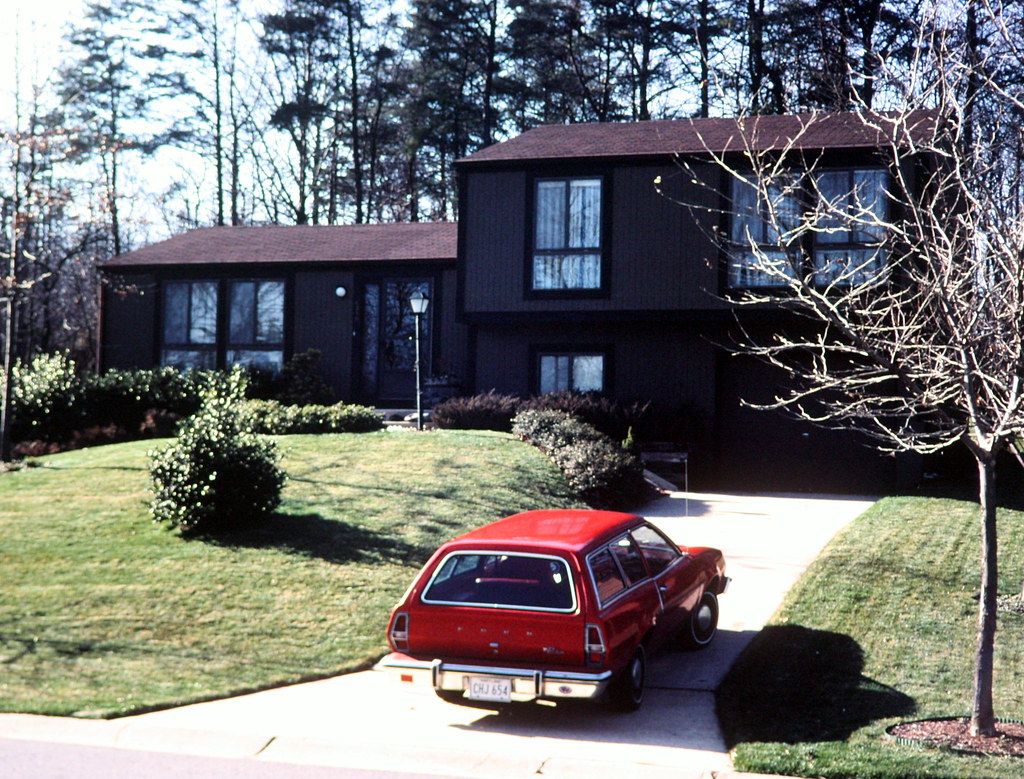
1. **Ford Pinto (1971-1980)** The Ford Pinto stands as perhaps the most infamous example of a deadly design flaw in automotive history, becoming a foundational case study in corporate ethics and product liability. Developed during the 1970s fuel crisis, this compact car was rushed to production in just 25 months, significantly less than the typical 43 months. This accelerated timeline contributed to its catastrophic defect: a fuel tank positioned precariously behind the rear axle with minimal protection and inadequate separation from the passenger compartment, a critical oversight.
This technical deficiency turned deadly in rear-end collisions. Even at relatively low speeds of 20-30 mph, the Pinto’s fuel tank could be punctured by bolts protruding from the differential or pushed into the rear axle itself. This design flaw would cause fuel leakage, often leading to catastrophic, fiery explosions that trapped occupants. The full extent of Ford’s knowledge became a scandal with the discovery of the “Pinto Memo,” an internal document that starkly calculated the cost of improving the fuel tank design ($11 per vehicle) against the projected expense of legal settlements for burn deaths ($200,000 per life).
This cold, cost-benefit analysis shockingly revealed that Ford had identified the problem before production but deemed fixing it more expensive than paying for the resulting deaths and injuries. While exact figures remain disputed, estimates suggest the Pinto’s fuel tank design contributed to between 500 and 900 burn deaths. The Grimshaw v. Ford Motor Company lawsuit, following the tragic deaths of three teenage girls in a fiery Pinto crash, resulted in a landmark punitive damages award. Ford eventually recalled 1.5 million Pintos in 1978, adding a plastic shield and reinforcements, forever changing product liability law and forcing the auto industry to reassess its safety priorities.
Car Model Information: 1980 Ford Pinto WAGON
Name: Ford Pinto
Caption: Ford Pinto
Manufacturer: Ford Motor Company
Aka: Mercury Bobcat
Production: September 1970 – July 1980
ModelYears: 1971–1980 (Pinto),1974–1980 (Bobcat)
Assembly: Edison, New Jersey,Milpitas, California
Designer: Robert Eidschun (1968)
Class: Subcompact car
BodyStyle: Sedan (automobile),sedan delivery,station wagon,hatchback
Related: #Mercury Bobcat (1974–1980),Ford Mustang (second generation)
Layout: Front-engine, rear-wheel-drive layout
Chassis: Unibody
Engine: unbulleted list
Abbr: on
Disp: Ford Cologne engine
Transmission: unbulleted list
Wheelbase: 94.0 in
Length: 163 in
Width: 69.4 in
Height: 50 in
Weight: convert
Predecessor: Ford Cortina#Mark II (1966–1970)
Successor: Ford Escort (North America)
Categories: 1980s cars, Articles with short description, Cars discontinued in 1980, Cars introduced in 1970, Commons category link from Wikidata
Summary: The Ford Pinto is a subcompact car that was manufactured and marketed by Ford Motor Company in North America from 1970 until 1980. The Pinto was the first subcompact vehicle produced by Ford in North America.
The Pinto was marketed in three body styles throughout its production: a two-door fastback sedan with a trunk, a three-door hatchback, and a two-door station wagon. Mercury offered rebadged versions of the Pinto as the Mercury Bobcat from 1975 until 1980 (1974–1980 in Canada). Over three million Pintos were produced over its ten-year production run, outproducing the combined totals of its domestic rivals, the Chevrolet Vega and the AMC Gremlin. The Pinto and Mercury Bobcat were produced at Edison Assembly in Edison, New Jersey, St. Thomas Assembly in Southwold, Ontario, and San Jose Assembly in Milpitas, California.
Since the 1970s, the safety reputation of the Pinto has generated controversy. Its fuel-tank design attracted both media and government scrutiny after several deadly fires occurred when the tanks ruptured in rear-end collisions. A subsequent analysis of the overall safety of the Pinto suggested it was comparable to other 1970s subcompact cars. The safety issues surrounding the Pinto and the subsequent response by Ford have been cited widely as business ethics and tort reform case studies.
Get more information about: Ford Pinto
Buying a high-performing used car >>>
Brand: Ford Model: Pinto
Price: $5,951 Mileage: 107,000 mi.
Read more about: 14 Iconic Cars You Loved, But Seriously, Don’t Drive Today
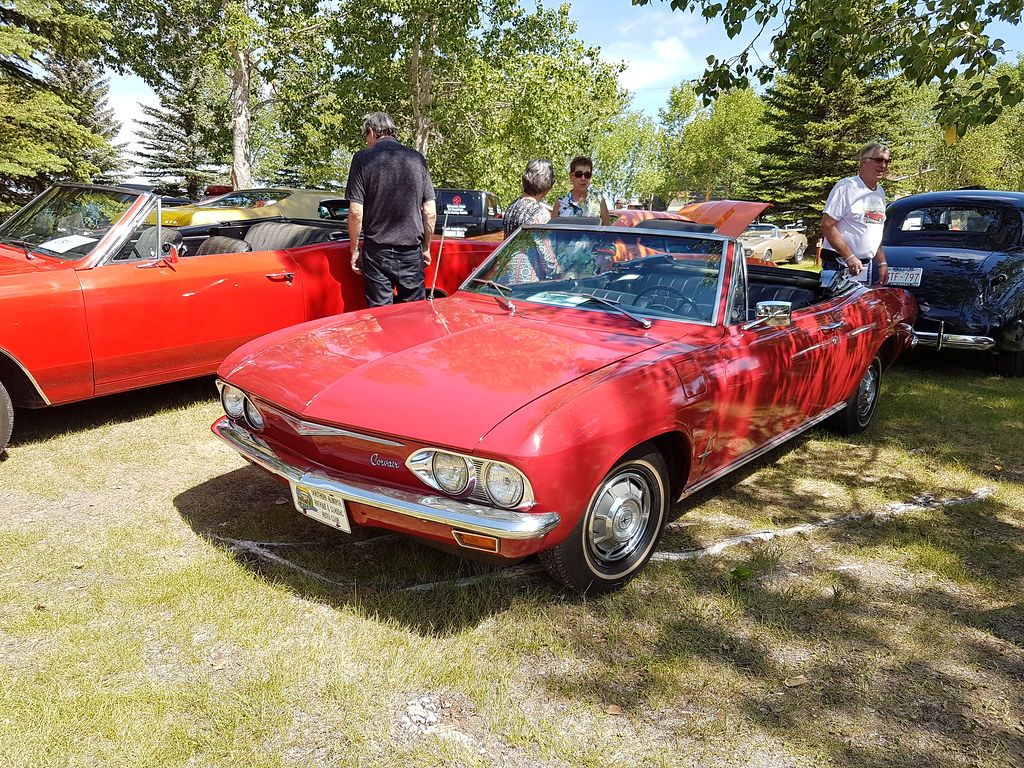
2. **Chevrolet Corvair (1960-1969)** The Chevrolet Corvair earned its place in automotive infamy through a combination of revolutionary design and deadly handling characteristics that inadvertently sparked the modern automotive safety movement. Unlike conventional American cars of its era, the Corvair featured a rear-mounted, air-cooled engine and an innovative swing-axle rear suspension. While forward-thinking, this unique configuration inadvertently created a lethal handling flaw, making the vehicle prone to sudden, unpredictable oversteer, especially during emergency maneuvers or at higher speeds.
The technical issue originated from the rear swing axle design, which lacked a compensating mechanism. During hard cornering, the outside wheel would experience what was termed “tuck under.” This extreme positive camber change would cause the tire to lose crucial contact with the road precisely when maximum grip was most needed for control. Combined with the vehicle’s inherent rear weight bias, this made the Corvair prone to dangerous spin-outs or, even worse, roll-overs with very little warning to the driver. Compounding this engineering vulnerability, Chevrolet controversially opted to save a mere $0.57 per car by omitting a front anti-roll bar, a component engineers had strongly recommended during the development phase.
The Corvair’s deadly design flaw gained national attention in 1965 when consumer advocate Ralph Nader published his seminal book, “Unsafe at Any Speed.” The book dedicated its damning first chapter to the Corvair, titling it “The Sporty Corvair: The One-Car Accident,” and exposing GM’s knowledge of the handling issues which they chose to conceal. The ensuing controversy led to significant congressional hearings and ultimately paved the way for the creation of the National Highway Traffic Safety Administration (NHTSA) in 1970. GM’s attempt to discredit Nader through private investigators only backfired, strengthening his credibility and further damaging the company’s reputation, eventually forcing design changes and a fully independent rear suspension in later models.
Product on Amazon: Redline Tuning 21-11019-02 Hood QuickLIFT Plus System Compatible with Ford Pinto 1971-1980 (All Black Components)
Brand: Redline Tuning
Binding: Product Group: Automotive Parts and Accessories
Price: 89.95 USD
Rating: 5.0 Total reviews: 2
Color: Black
Auto Part Position: Front
Manufacturer: Redline Tuning
Shopping on Amazon >>
Car Model Information: 1964 Chevrolet Corvair Monza
Caption: 1964 Chevrolet Corvair Monza
Name: Chevrolet Corvair
Manufacturer: Chevrolet
Production: 1960–1969
Platform: GM Z platform
Chassis: Unibody
ModelYears: 1960–1969
Assembly: United States,Kansas City, Missouri,Oakland, California,Van Nuys,St. Louis,Flint, Michigan,Belgium,Canada,Mexico,South Africa,Switzerland,Venezuela
Class: Compact car
Successor: Chevrolet Vega
Layout: Rear-engine, rear-wheel-drive layout
Categories: All Wikipedia articles written in American English, All articles lacking in-text citations, All articles needing additional references, All articles with dead external links, All articles with specifically marked weasel-worded phrases
Summary: The Chevrolet Corvair is a rear-engined, air-cooled compact car manufactured and marketed by Chevrolet over two generations between 1960 and 1969. The Corvair was a response to the increasing popularity of small, fuel-efficient automobiles, particularly the imported Volkswagen Beetle and the success of American-built compacts like the Rambler American and Studebaker Lark.
The first generation (1960–1964) was offered as a four-door sedan, two-door coupe, convertible, and four-door station wagon. A two- and four-door hardtop and a convertible were available second generation (1965–1969) variants. The Corvair platform was also offered as a subseries known as the Corvair 95 (1961–1965), which consisted of a passenger van, commercial van, and pickup truck variant. Total production was approximately 1.8 million vehicles from 1960 until 1969.
The name “Corvair” was first applied in 1954 to a Corvette-based concept with a hardtop fastback-styled roof, part of the Motorama traveling exhibition. When applied to the production models, the “air” part referenced the engine’s cooling system.
A prominent aspect of the Corvair’s legacy derives from controversy surrounding its handling, articulated aggressively by Ralph Nader’s Unsafe at Any Speed and tempered by a 1972 Texas A&M University safety commission report for the National Highway Traffic Safety Administration (NHTSA) which found that the 1960–1963 Corvair possessed no greater potential for loss of control in extreme situations than contemporary compacts.
To better counter popular inexpensive subcompact competitors, notably the Beetle and Japanese imports such as the Datsun 510, GM replaced the Corvair with the more conventional Chevrolet Vega in 1970.
Get more information about: Chevrolet Corvair
Buying a high-performing used car >>>
Brand: Chevrolet Model: Corvair
Price: $29,988 Mileage: 74,787 mi.
Read more about: 15 Cars From the 1960s That History Would Rather Forget
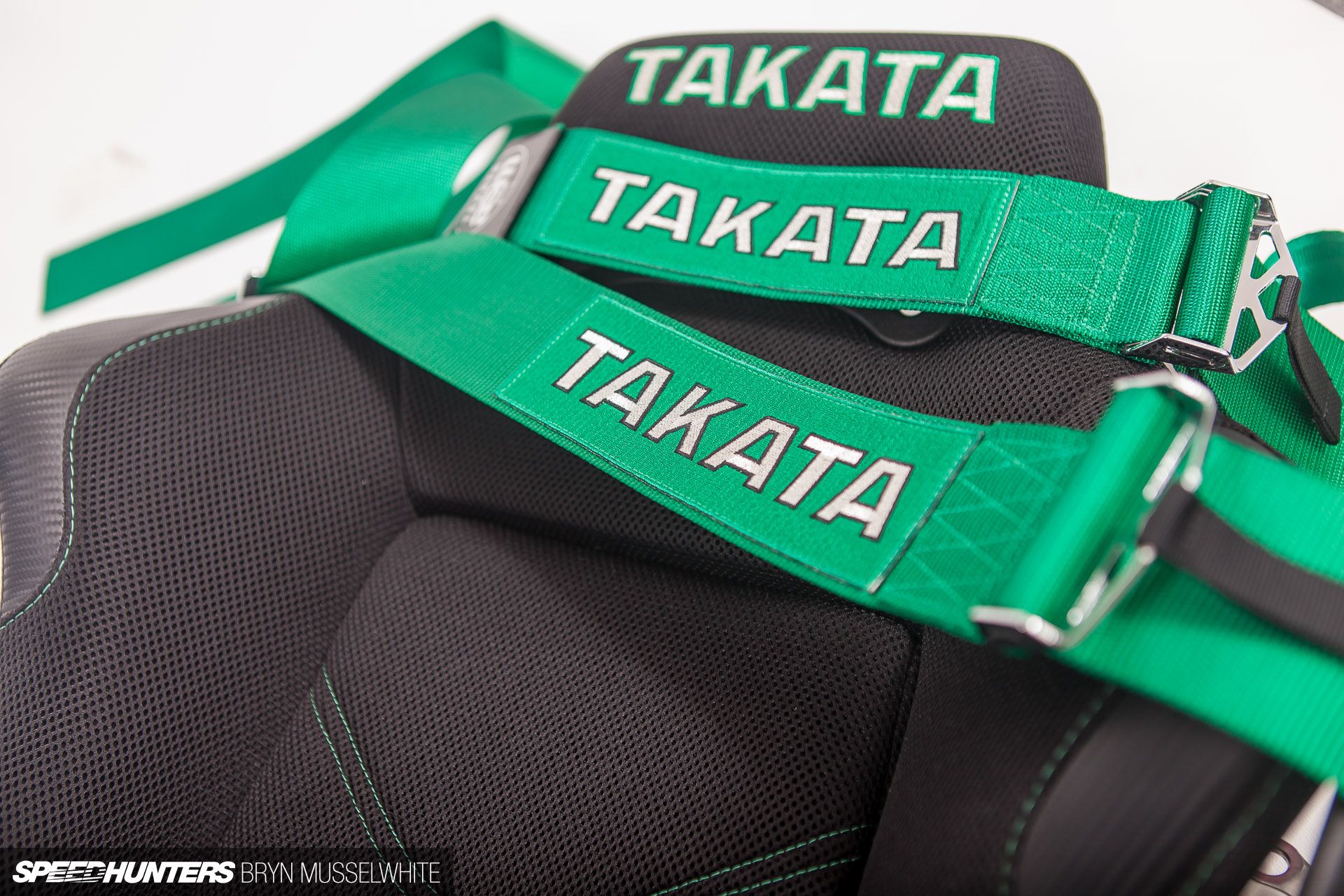
3. **Takata Airbags (Multiple Vehicles, 2002-2015)** While not a vehicle itself, Takata’s defective airbags represent perhaps the deadliest automotive design flaw in modern history, affecting tens of millions of vehicles across nearly two dozen manufacturers globally. The catastrophic defect was rooted in the airbag inflator, which contained ammonium nitrate propellant without a crucial chemical drying agent. Over time, when exposed to heat and humidity, this propellant could degrade and become dangerously unstable, causing the metal inflator housing to explode with extreme force upon deployment, rather than inflating safely.
The consequences of these defective deployments were horrific and often initially mistaken for violent attacks rather than equipment failure. When these faulty airbags deployed, they could spray razor-sharp metal shrapnel throughout the vehicle cabin at lethal speeds, transforming a safety device into a deadly weapon. Victims suffered devastating injuries including severed carotid arteries, punctured eyes, shredded vocal cords, and penetrating brain injuries. Some first responders were initially baffled by the nature of the wounds, believing victims had been attacked with knives or gunfire, underscoring the severity of the malfunction.
What made the Takata case particularly egregious was compelling evidence that the company had known about the defect for years but actively concealed it from the public and regulators. Internal documents revealed that Takata engineers had raised concerns about the unstable propellant as early as 2000. When early airbags failed in testing, test data was allegedly altered to hide the problem. The scale of the defect was unprecedented, ultimately affecting over 100 million vehicles worldwide. By 2023, at least 27 people had been killed and more than 400 injured in the United States alone. The scandal led to Takata’s bankruptcy, criminal charges, and approximately $1 billion in fines and compensation, forcing significant reforms in how automotive defects are reported and tracked.
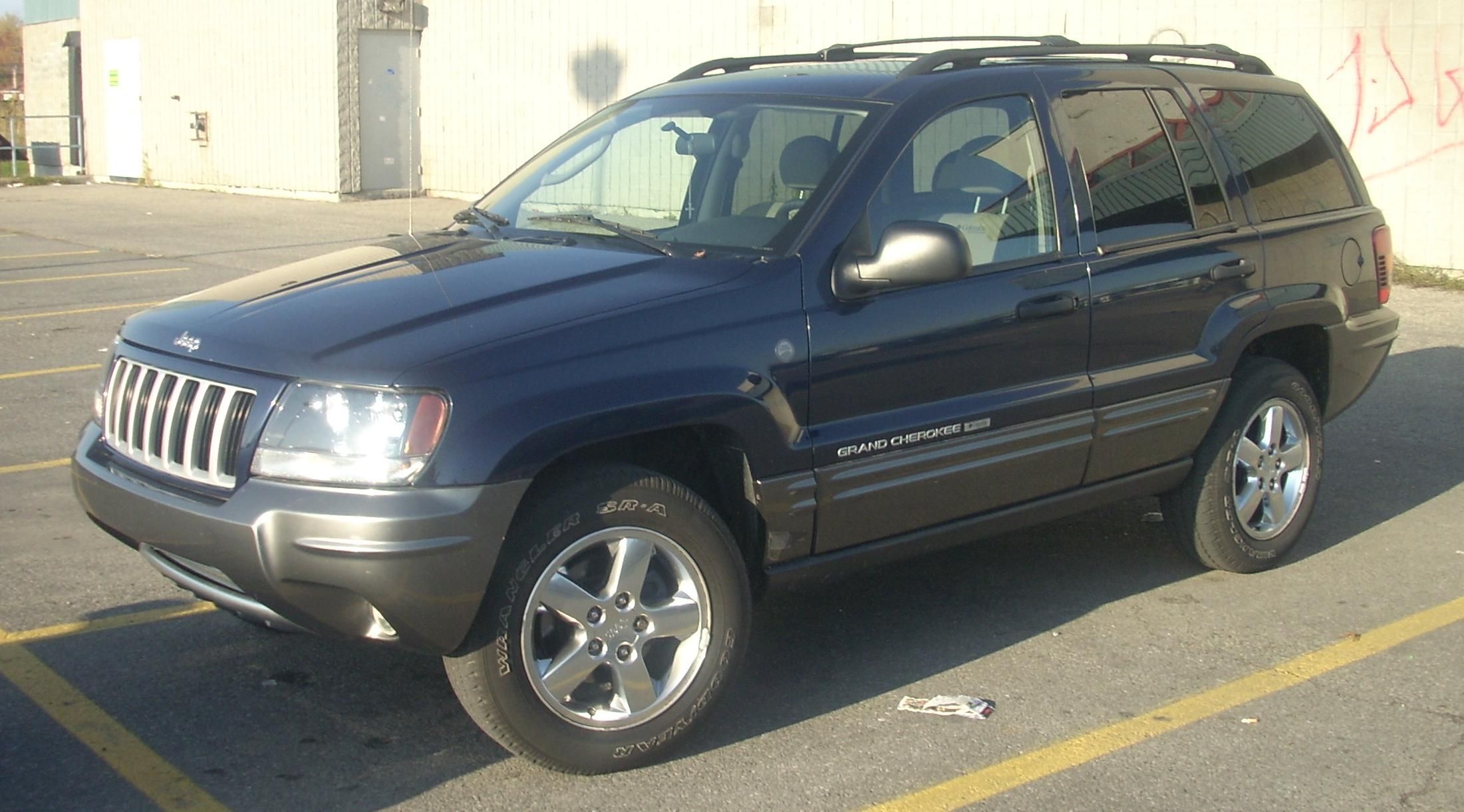
4. **Jeep Grand Cherokee (1993-2004)** The Jeep Grand Cherokee’s deadly design flaw centered on what safety advocates vividly described as its “gas tank ticking time bomb”—a fuel tank positioned behind the rear axle in a location highly vulnerable to rupture during rear-end collisions. This unfortunate placement left just 11 inches between the plastic fuel tank and the rear bumper, offering minimal structural protection. This design oversight created an extreme risk of fire or explosion, even in moderate-speed impacts, turning a family SUV into a potential inferno.
The design proved tragically flawed when struck from behind. The Grand Cherokee’s tank could be punctured by sharp objects, crushed against the rear differential, or have its filler neck violently torn away from the tank itself. Any of these failure modes could spray atomized fuel near hot exhaust components and electrical systems, creating perfect conditions for catastrophic fires. Survivors and witnesses often described vehicles engulfed in flames within mere seconds of impact, frequently trapping occupants inside the burning wreckage, underscoring the rapid and deadly progression of these incidents.
Chrysler’s initial response to mounting evidence of the danger compounded the tragedy significantly. Despite numerous fatal crashes and at least 75 documented fire deaths, the company initially resisted calls for recalls. They argued that the vehicles technically met all federal safety standards of their time, a defense that was increasingly recognized as inadequate given the real-world consequences. The most heartbreaking cases included that of four-year-old Remington Walden, who burned to death after his aunt’s Grand Cherokee was struck from behind. A jury awarded his family $150 million, finding Chrysler had acted with “reckless disregard” for human life, though the award was later reduced. NHTSA eventually pushed for a recall, leading to a “voluntary campaign” covering 1.56 million vehicles. However, the fix, which involved installing a trailer hitch, was widely criticized by many experts as insufficient to fully address the fundamental safety flaw.
Car Model Information: 2021 Lexus GX 460 Premium
Name: Jeep Grand Cherokee
Manufacturer: Jeep
Production: 1992–present
ModelYears: 1993–present
Class: unbulleted list
BodyStyle: sport utility vehicle
Layout: unbulleted list
Chassis: Vehicle_frame#Uniframe
Categories: 2000s cars, 2010s cars, 2020s cars, All-wheel-drive vehicles, All Wikipedia articles written in American English
Summary: The Jeep Grand Cherokee is a range of mid-sized sport utility vehicles produced by American manufacturer Jeep. At its introduction, while most SUVs were still manufactured with body-on-frame construction, the Grand Cherokee has used a unibody chassis from the start.
Get more information about: Jeep Grand Cherokee
Buying a high-performing used car >>>
Brand: Jeep Model: Grand Cherokee
Price: $42,477 Mileage: 59,552 mi.
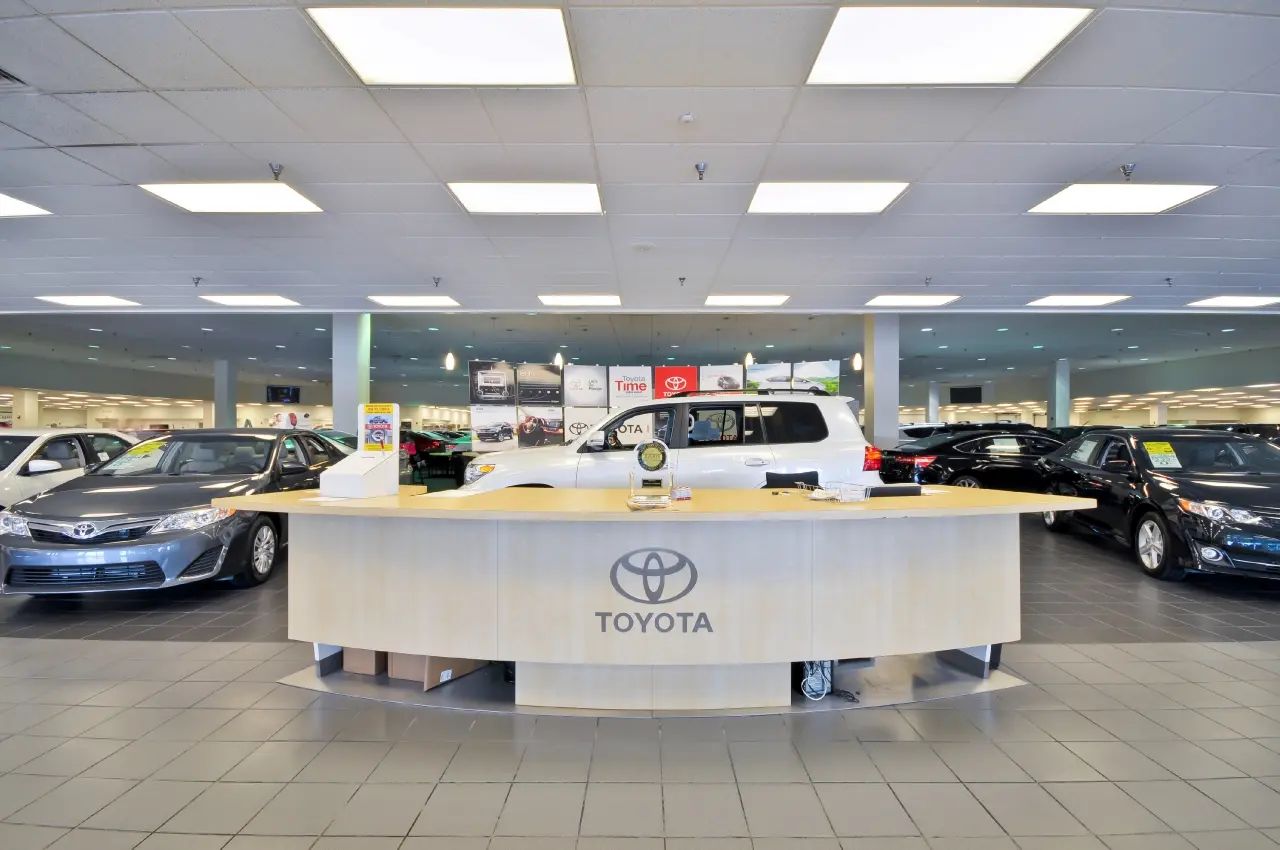
5. **Toyota Unintended Acceleration (2002-2010)** Toyota’s unintended acceleration crisis represents one of the most complex and controversial safety issues in modern automotive history. Between 2002 and 2010, thousands of Toyota and Lexus vehicles exhibited a frightening tendency to suddenly accelerate uncontrollably, often with drivers unable to stop the vehicle despite repeated braking efforts. This terrifying phenomenon resulted in numerous crashes, with at least 89 deaths and 57 injuries officially attributed to the defect, though many safety advocates believe the actual human toll was significantly higher.
The technical causes behind this deadly flaw proved exceptionally difficult to isolate, sparking intense debate among experts and regulators. Initially, Toyota largely attributed the problem to improperly installed or incompatible floor mats that could trap the accelerator pedal. Later, the company acknowledged that some accelerator pedal mechanisms could become sticky due to wear or environmental conditions. However, many affected drivers reported incidents that couldn’t be explained by either of these causes, steadfastly insisting their vehicles accelerated despite properly secured floor mats and seemingly functioning pedals, pointing to a deeper, more systemic issue.
Safety advocates and some independent engineers increasingly pointed to potential electronic throttle control system malfunctions as the root cause. This concern was amplified by Toyota’s transition from mechanical throttle linkages to electronic “drive-by-wire” systems during this period. Critics argued that electromagnetic interference, subtle software glitches, or faulty sensors could corrupt the electronic signals controlling engine power, leading to unexpected acceleration. Toyota vehemently denied electronic causes, yet NASA engineers later identified scenarios where certain electronic failures could indeed cause unintended acceleration without setting diagnostic trouble codes. The crisis led to recalls of over 9 million vehicles, significant fines and settlements, and transformed automotive safety by making brake override systems an industry standard, highlighting the new challenges of diagnosing defects in computerized vehicles.
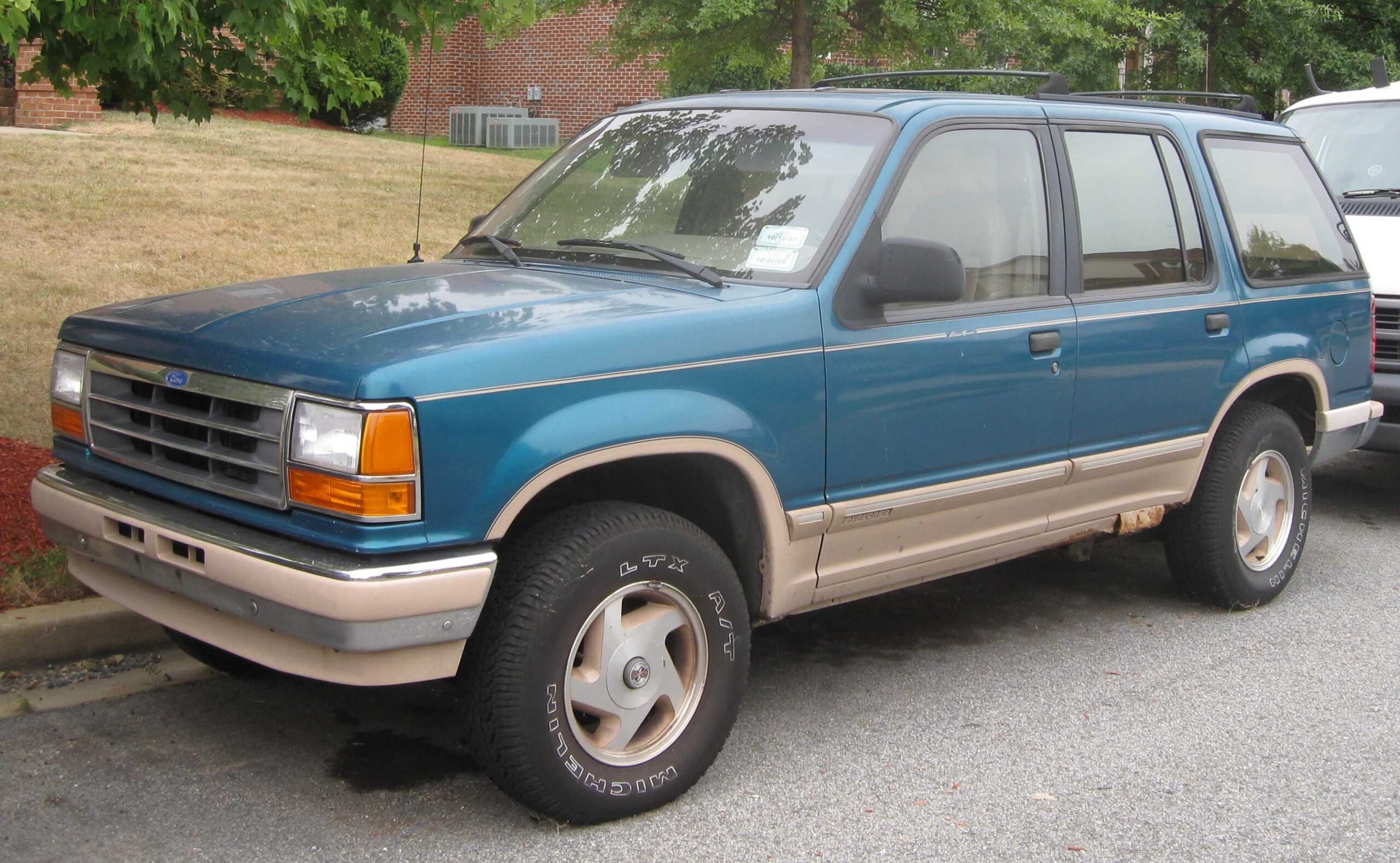
6. **Firestone/Ford Explorer Crisis (1990-2001)** The deadly partnership between the Ford Explorer SUV and certain Firestone tires created one of the most lethal design flaws in automotive history. This was not because either product was catastrophically flawed on its own, but because their specific combination created perfect, synergistic conditions for disaster. Between 1990 and 2001, Firestone Wilderness AT and ATX tires experienced catastrophic tread separation at an alarming and unprecedented rate, particularly when mounted on the Ford Explorer. When these failures occurred at highway speeds, the Explorer’s high center of gravity and suspension characteristics made it exceptionally prone to dangerous rollovers.
The technical issues stemmed from multiple, compounding factors. The Firestone tires suffered from significant manufacturing defects, particularly at the company’s Decatur, Illinois plant, where labor disputes had demonstrably led to severe quality control problems. These tires were notoriously prone to internal belt separation, a weakness exacerbated when they were underinflated and operating in high temperatures, common conditions in many regions. Ford, in turn, had exacerbated this inherent tire weakness by controversially recommending tire pressures of 26 PSI, which was lower than Firestone’s own recommendation of 30 PSI, allegedly to improve the Explorer’s ride quality and reduce the risk of rollover during government stability testing.
The human toll of this crisis was staggering and tragic. The defect was directly linked to over 271 confirmed deaths and more than 800 injuries in the United States alone, with many additional fatalities reported internationally. Most victims died not from the initial tire failure itself but from the subsequent, violent rollover crashes, which often ejected passengers or crushed the vehicle’s roof structure. Internal documents shockingly revealed that both companies had early knowledge of the dangers but repeatedly delayed taking meaningful action. This widespread corporate negligence and cover-up ultimately led to the recall of 14.4 million tires and the passage of the TREAD Act, forever changing how potential defects are reported and tracked within the automotive industry.
Car Model Information: 2018 Ford Explorer Sport
Name: Ford Explorer
Caption: Sixth-generation Ford Explorer
Manufacturer: Ford Motor Company
Production: 1990–present
ModelYears: 1991–present
Class: unbulleted list
Chassis: unbulleted list
Predecessor: Ford Bronco II
Successor: Ford Territory (Australia)
Categories: 2000s cars, 2010s cars, 2020s cars, All-wheel-drive vehicles, All Wikipedia articles in need of updating
Summary: The Ford Explorer is a range of SUVs manufactured by the Ford Motor Company since the 1991 model year. The first five-door SUV produced by Ford, the Explorer, was introduced as a replacement for the three-door Bronco II. As with the Ford Ranger, the model line derives its name from a trim package previously offered on Ford F-Series pickup trucks. As of 2020, the Explorer became the best-selling SUV in the American market.
Currently in its sixth generation, the Explorer has featured a five-door wagon body style since its 1991 introduction. During the first two generations, the model line included a three-door wagon (directly replacing the Bronco II). The Ford Explorer Sport Trac is a crew-cab mid-size pickup derived from the second-generation Explorer. The fifth and sixth generations of the Explorer have been produced as the Ford Police Interceptor Utility (replacing both the Ford Crown Victoria Police Interceptor and the Ford Police Interceptor Sedan).
The Explorer is slotted between the Ford Edge and Ford Expedition within North America’s current Ford SUV range. The model line has undergone rebadging several times, with Mazda, Mercury, and Lincoln each selling derivative variants. Currently, Lincoln markets a luxury version of the Explorer as the Lincoln Aviator.
For the North American market, the first four generations of the Explorer were produced by Ford at its Louisville Assembly Plant (Louisville, Kentucky) and its now-closed St. Louis Assembly Plant (Hazelwood, Missouri). Ford currently assembles the Explorer alongside the Lincoln Aviator and the Police Interceptor Utility at its Chicago Assembly Plant (Chicago, Illinois).
Get more information about: Ford Explorer
Buying a high-performing used car >>>
Brand: Ford Model: Explorer
Price: $19,780 Mileage: 123,120 mi.
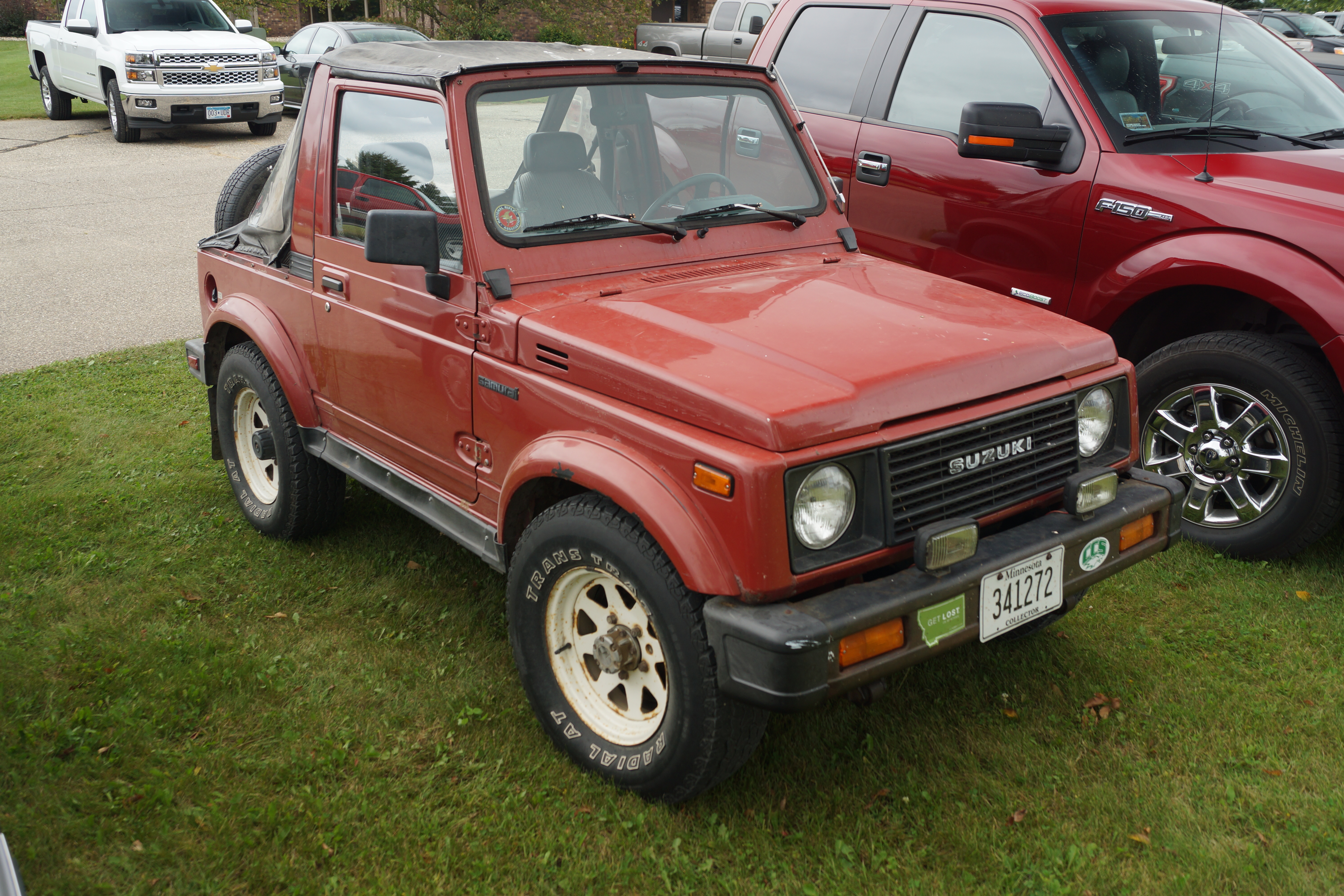
7. **Samurai Suzuki (1985-1995)**The Suzuki Samurai earned a truly unwanted distinction, becoming known as one of the most rollover-prone vehicles ever sold in the United States. This compact SUV was essentially a recipe for instability, combining a narrow track width with a relatively high center of gravity and a short wheelbase. Its fundamental design choices, prioritizing off-road ruggedness, led to a significant public safety concern that culminated in Consumer Reports famously publishing a “Not Acceptable” rating in 1988 after the Samurai tipped onto two wheels during their testing, highlighting the risks during emergency maneuvers.
The underlying technical issues were rooted deeply in the Samurai’s engineering. Its solid front axle and leaf spring suspension, while excellent for navigating challenging off-road terrain, created unpredictable handling dynamics when subjected to rapid directional changes on paved roads. Adding to this, the vehicle’s narrow body, measuring only 66 inches wide, was paired with a relatively tall ride height, dangerously elevating its center of gravity. Most critically, the suspension system allowed for excessive body roll, resulting in dramatic weight transfer during cornering that could cause the inside wheels to lift off the ground, a precursor to a full rollover.
The human cost of this instability was tragically high. Between 1985 and 1995, at least 213 deaths and 8,200 injuries in the United States were attributed to Samurai rollovers. Rollovers are particularly lethal, often leading to catastrophic head and neck injuries from roof crush or occupant ejection. The Samurai’s lightweight roof structure offered minimal protection, exacerbating these injuries, and young drivers were disproportionately affected due to the vehicle’s affordability and popular image among newer, less experienced drivers. Suzuki’s response only compounded the issue; instead of addressing the fundamental stability flaws, the company launched an aggressive, ultimately unsuccessful, campaign against Consumer Reports. However, the controversy had a lasting impact, directly leading to the development of the “fishhook” maneuver for government rollover testing and accelerating the adoption of electronic stability control systems, demonstrating how even a single vehicle’s flaw can drive industry-wide safety improvements.
Car Model Information: 1987 Suzuki Samurai Base
Name: Suzuki Jimny
Caption: 2019 Suzuki Jimny SZ5
Manufacturer: Suzuki
Production: April 1970 – present (2.85 million units sold by September 2018)
Class: Off-road vehicle,mini SUV
BodyStyle: SUV,van,convertible,pickup truck
Layout: Front-engine, rear-wheel-drive layout,Front-engine, four-wheel-drive layout
Chassis: Body-on-frame
Related: Suzuki Vitara,Maruti Gypsy
Categories: 1980s cars, 1990s cars, 2000s cars, 2010s cars, All articles with minor POV problems
Summary: The Suzuki Jimny (Japanese: スズキ・ジムニー, Suzuki Jimunī) is a series of four-wheel drive off-road mini SUVs, manufactured and marketed by Japanese automaker Suzuki since 1970.
Originally belonging to the kei class, Japan’s light automobile tax/legal class, the company continues to market a kei-compliant version for the Japanese and global markets as the Jimny, as well as versions that exceed kei-class limitations. Suzuki has marketed 2.85 million Jimnys in 194 countries through September 2018.
Get more information about: Suzuki Jimny
Buying a high-performing used car >>>
Brand: Suzuki Model: Samurai
Price: $17,500 Mileage: 1,000 mi.
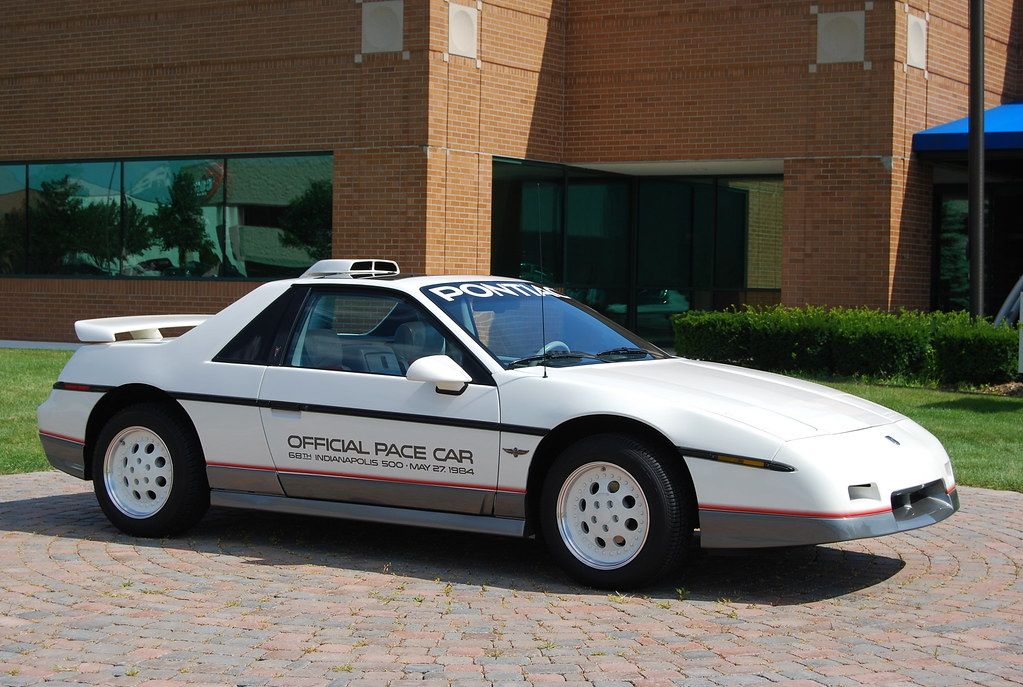
8. **Pontiac Fiero (1984-1988)**The Pontiac Fiero, an innovative mid-engine sports car developed as General Motors’ answer to fuel-efficient imports, was tragically marred by a deadly design flaw that transformed it into a potential firetrap. This otherwise promising vehicle gained notoriety for its alarming tendency to catch fire, a problem stemming from fundamental engineering compromises. The primary issue involved the engine’s design and positioning, which allowed oil to leak onto hot exhaust components during normal operation, creating perfect conditions for engine compartment fires that could quickly engulf the entire vehicle.
The technical problem originated from GM’s decision to adapt the “Iron Duke” four-cylinder engine, originally designed for front-wheel-drive applications, for mid-engine use in the Fiero without adequate modifications. The engine’s connecting rods were insufficient for the higher RPMs the sporty Fiero often encouraged, frequently leading to catastrophic failures that could puncture the engine block. When this occurred, oil would spray directly onto the hot exhaust manifold, igniting almost instantly. Compounding this, the Fiero’s engine cradle design provided inadequate ventilation and insufficient oil containment, while the composite body panels further fueled the flames once ignited, leading to rapid vehicle destruction.
By August 1987, the National Highway Traffic Safety Administration (NHTSA) had documented an alarming 260 engine fires in Fieros, with a particularly dangerous 31 incidents occurring while the vehicles were parked and turned off, posing a severe risk of fires spreading to buildings. While direct fatalities were relatively few compared to other vehicles on this list, numerous injuries were sustained, primarily from burns as occupants attempted to escape or retrieve belongings from the rapidly burning vehicles. Evidence suggests GM engineers had identified these issues during development but proceeded with production to meet cost targets and timelines. Though GM eventually recalled approximately 125,000 1984 Fieros in 1987 to install engine cradle reinforcements and an improved oil collection system, this only addressed the earliest models, leaving hundreds of thousands of later Fieros with similar vulnerabilities. In a bitter irony, GM had resolved many of the Fiero’s engineering problems for the 1988 model year, introducing a properly designed suspension and numerous reliability improvements, only to discontinue the model entirely that same year due to plummeting sales and liability concerns.
Product on Amazon: NGK Spark Plug Wire Set compatible with Suzuki Samurai 1.3L L4 1985-1995
Brand: Sixity Auto
Binding: Automotive Product Group: Automotive Parts and Accessories
Price: 39.21 USD
Rating: 4.5 Total reviews: 38
Features:
1. This NGK Spark Plug Wire Set is compatible with Suzuki Samurai 1995, 1994, 1993, 1992, 1991, 1990, 1989, 1988, 1987, 1986, 1985 1.3L L4
2. Genuine NGK Parts
3. Includes original packaging and hardware
4. Direct replacement auto parts
5. Confirm vehicle fitment with Amazon Confirmed Fit
Shopping on Amazon >>
Car Model Information: 1988 Pontiac Fiero Formula
Name: Pontiac Fiero
Caption: 1988 Fiero Formula
Manufacturer: Pontiac (automobile)
Production: August 1983 – August 16, 1988,370,168 produced
ModelYears: 1984 – 1988
Successor: Pontiac Solstice
Assembly: Pontiac, Michigan
Designer: Hulki Aldikacti,George Milidrag
Class: Sports car
BodyStyle: fastback,notchback
Platform: GM P platform
Layout: Rear mid-engine, rear-wheel-drive layout
Engine: {{cvt,151,CID,L,1,disp=flip,Iron Duke engine#LR8,Inline-four engine
Transmission: Turbo-Hydramatic 125,Manual transmission,Getrag 282 transmission,Isuzu
Wheelbase: 2373 mm
Abbr: on
Length: 4072 mm
Width: 1750 mm
Height: 1191 mm
Weight: 1116 to
Categories: All articles with unsourced statements, Articles with short description, Articles with unsourced statements from February 2012, Articles with unsourced statements from July 2024, Articles with unsourced statements from September 2011
Summary: The Pontiac Fiero is a rear mid-engine, light sports car manufactured and marketed by Pontiac for model years 1984 – 1988. Intended as an economical commuter car with modest performance aspirations, it was Pontiac’s first two-seater since their 1926 to 1938 coupes, and the first mass-produced, rear mid-engine car by any American manufacturer.
In addition to using 4- and 6-cylinder engines to help Pontiac meet America’s ‘CAFE’ average fuel economy requirements, the Fiero’s chassis and structure technology used non-load-bearing, composite body-panels, contributing to the car’s light-weight and its unique selling proposition. Pontiac engineers modified the design over its life to enhance its performance and reposition the two-seater closer to the implications of its sporty configuration.
The Fiero 2M4 (two-seat, mid-engine, four-cylinder) placed on Car and Driver magazine’s Ten Best list for 1984, and was the Official Pace Car of the Indianapolis 500 for 1984.
A total of 370,168 Fieros were manufactured over five years’ production, its mild performance, reliability and safety issues becoming points of criticism. The Fiero was discontinued after annual sales fell steadily.
Get more information about: Pontiac Fiero
Buying a high-performing used car >>>
Brand: Pontiac Model: Fiero
Price: $11,000 Mileage: 101,027 mi.
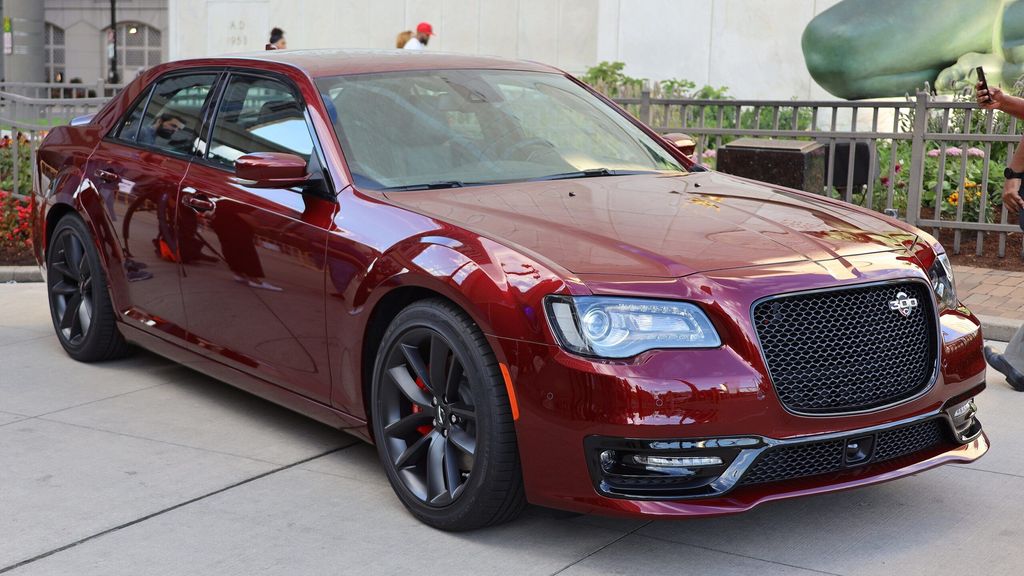
9. **Chrysler Minivan Liftgate Latch (1984-1995)**The deadly design flaw in Chrysler’s first-generation minivans serves as a stark example of how even subtle engineering oversights can escalate into catastrophic consequences. For over a decade, millions of Plymouth Voyager, Dodge Caravan, and Chrysler Town & Country minivans were equipped with rear liftgate latches that proved dangerously prone to failure during even minor rear-end collisions. This defect could cause the liftgate to fly open, creating a severe risk of ejecting passengers, a particularly lethal flaw given that these family vehicles typically carried children in the rear seats, precisely the area made vulnerable by the faulty latch.
The technical problem originated from the latch’s horizontal orientation and single-point design. Unlike more robust, vertically oriented latches that naturally resist opening forces during impacts, Chrysler’s horizontal design could easily disengage when subjected to crash forces or even routine road vibrations. Compounding this vulnerability, the latch assembly crucially lacked backup safety features commonly found in other manufacturers’ designs of the era. Most concerningly, because the liftgate was an integral part of the vehicle’s passenger safety cell, its failure effectively compromised the entire structural integrity of the vehicle during crashes, turning a seemingly minor component into a major safety liability.
The human toll of this defect was truly heartbreaking. At least 37 people, including 22 children, lost their lives in crashes where the liftgate opened during impact, with hundreds more suffering severe injuries. The most devastating cases involved children who were tragically ejected through the open liftgate during otherwise survivable accidents, sustaining fatal head and spine injuries upon impact with the road. These tragedies were further compounded by the fact that many parents had specifically chosen minivans for their perceived safety benefits for families. Only after intense pressure from the National Highway Traffic Safety Administration (NHTSA) did Chrysler finally agree to a full recall in 1995, covering an unprecedented 4.3 million minivans—at the time, the largest recall in automotive history. Even then, the company’s chosen fix, a replacement latch, was widely criticized by safety experts as inadequate, as it shared many of the same fundamental design vulnerabilities as the original. The minivan latch case underscores how vehicles marketed for family safety can harbor deadly design flaws and how corporate reluctance to address known issues can tragically multiply the human cost.
Product on Amazon: TRQ Ignition Switch Compatible with 2005-2010 Chevrolet Cobalt 2006-2011 HHR 2007-2009 Pontiac G5 2006-2009 Solstice 2003-2007 Saturn Ion 2007-2010 Sky
Brand: TRQ
Binding: Automotive Product Group: Automotive Parts and Accessories
Price: 30.95 USD
Rating: 4.8 Total reviews: 17
Operation Mode: manual
Contact Type: [Po] Possibly Open
Connector Type: Plug In
Terminal: Screw
Item dimensions L x W x H: 8 x 11 x 2 inches
Circuit Type: 1-way
Actuator Type: Ignition
Contact Material: Copper, Brass
International Protection Rating: IP00
Features:
1. Reference Number(s): US-778; US287; 10392423; 35130SH3A01; 35130SH5505; 35130SH5A01; 18-0449; 1802-305834; 1S17062; 1S6433; 201-1576; 247815; 53-27858; 633-00209; 803-21009; 80321009302; CS592; CSC1541; IG22791; IS18; LS1328; LS883; US778
2. EASE OF INSTALLATION: Save time and effort with pre-assembled components designed as direct replacements for the original equipment, ensuring precise fit and eliminating the need for modifications.
3. Additional specifications below
Shopping on Amazon >>
Car Model Information: 2023 Chrysler Pacifica Touring L
Caption: 2009 Chrysler Grand Voyager (Fifth generation)
Production: 1983–present
Class: Minivan,Panel van
BodyStyle: 3-door van,4-door van
Vehicles: Dodge Caravan,Plymouth Voyager,Chrysler Town & Country,Chrysler Pacifica (minivan),Chrysler Voyager,Lancia Voyager,Volkswagen Routan
Manufacturer: Chrysler Corporation (1984–1998),DaimlerChrysler AG (1998–2007),Chrysler LLC (2007–2009),Chrysler Group LLC (2009–2014),FCA US LLC (2014–2021),Stellantis USA LLC (2021–present)
Categories: Articles with short description, Chrysler platforms, Short description is different from Wikidata, Use mdy dates from July 2020
Summary: The Chrysler minivans are a series of minivans that have been produced and marketed by the American automaker Chrysler since the 1984 model year. Currently in its sixth generation, the model line is marketed worldwide, primarily in North America and Europe. Introduced as the Dodge Caravan and Plymouth Voyager, the Chrysler minivans have been marketed under a variety of nameplates under the Chrysler, Plymouth, Dodge, and Ram brands; through the use of rebadging, the model line has also been marketed under the Lancia and Volkswagen brands.
The introduction of the Chrysler minivans popularized the body styles by automakers in North America, leading to the introduction of competitive vehicles such as the Chevrolet Astro/GMC Safari, Ford Aerostar, Toyota Previa, and Mazda MPV. During the 1990s, the popularity of the model line led to its form factor becoming closely adopted by many of its competitors, leading to the Ford Windstar/Freestar, Honda Odyssey, Toyota Sienna, and Nissan Quest.
Since 1983, Chrysler has manufactured minivans at its Windsor Assembly facility (Windsor, Ontario, Canada). From 1987 to 2007, the company supplemented production in North America with its Saint Louis Assembly facility (Fenton, Missouri). For the European market, exports were largely supplemented by the Eurostar joint-venture factory in Graz, Austria from 1992 to 2002. The highest-selling line of minivans worldwide, Chrysler produced the 15 millionth example of the model line in 2019.
Get more information about: Chrysler minivans
Buying a high-performing used car >>>
Brand: Chrysler Model: Minivan
Price: $21,482 Mileage: 67,623 mi.
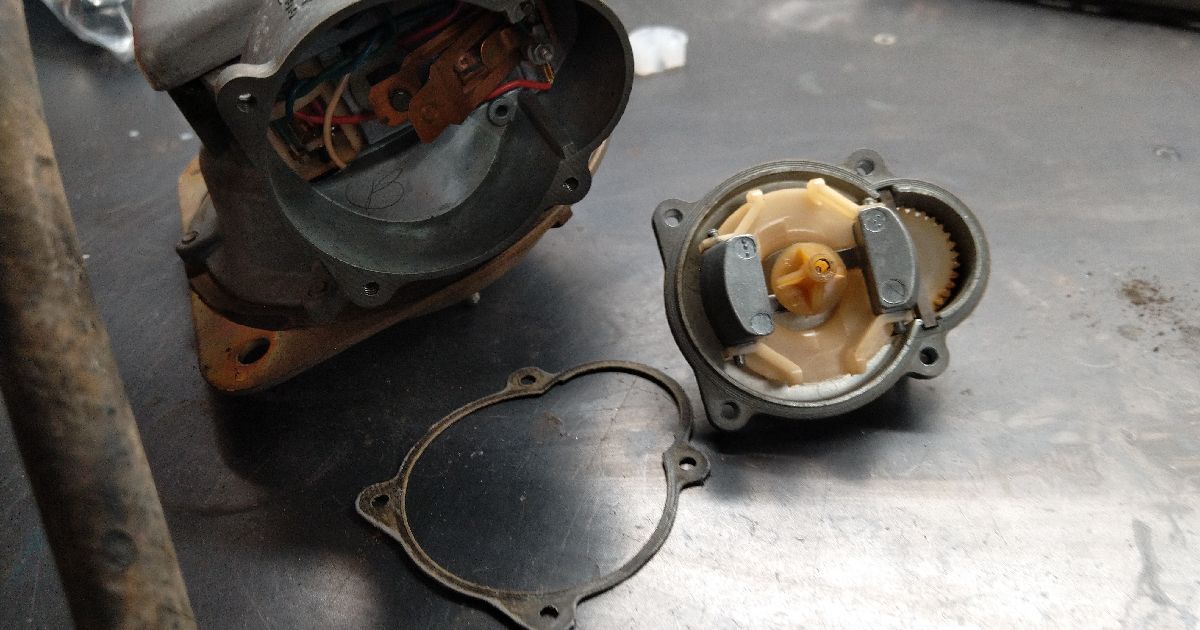
10. **1970s-Era Ford Cruise Control Systems**Ford’s cruise control systems, prevalent in vehicles from the 1970s through the early 2000s, harbored a truly deadly design flaw that created an unprecedented fire hazard. This particular defect was notorious for its ability to ignite vehicles not only while they were driving but, perhaps most alarmingly, even while they were parked and completely turned off. The core of the problem centered on the speed control deactivation switch, a component that utilized a hydraulic pressure system directly connected to the vehicle’s brake lines. Inside this switch, highly flammable brake fluid was separated from electrical contacts by a thin, failure-prone seal.
The technical problem would manifest when this critical seal deteriorated over time, a common occurrence due to age and exposure. This deterioration allowed brake fluid to leak directly into the electrical portion of the switch. Because the switch remained continuously powered, even when vehicles were parked and the ignition was off, the presence of brake fluid and electricity created ideal conditions for electrical arcs. These arcs could then ignite the flammable brake fluid, causing a fire to start within the switch. Once ignited, these fires could spread rapidly through the engine compartment and, terrifyingly, into the passenger cabin, consuming the entire vehicle.
The human impact of these fires extended tragically beyond just vehicle occupants, directly affecting homeowners and their families. At least 16 deaths and numerous injuries were directly attributed to these fires, with property damage estimated in the hundreds of millions of dollars. The most tragic cases involved entire families who perished in house fires that originated in attached garages where affected Ford vehicles were parked, often igniting hours or even days after the vehicles had been turned off and parked for the night. In one devastating incident, a Texas family of four died when their Ford F-150 caught fire in their garage and the flames quickly spread to their home while they slept. Ford’s response to the mounting evidence of danger proved woefully inadequate for many years. Despite receiving reports of unexplained vehicle fires as early as 1983, the company conducted only a series of limited recalls that addressed merely certain models and years, rather than all vehicles equipped with the fundamentally flawed switch design. Internal documents strongly suggested that Ford engineers had indeed identified the switch as a significant fire risk but hesitated to initiate broader, more comprehensive recalls due to the anticipated massive costs involved.
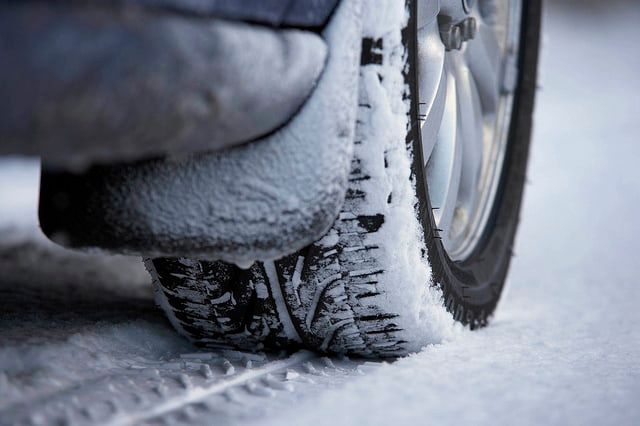
11. **Bridgestone/Firestone Wilderness AT Tires**The Bridgestone/Firestone Wilderness AT tire catastrophe stands as one of the deadliest product failures in automotive history, characterized by a design flaw so severe it triggered the recall of an astonishing 14.4 million tires and was directly linked to at least a thousand deaths and injuries worldwide. Unlike many automotive defects that become immediately apparent, the Wilderness AT’s fatal flaw manifested gradually over time and under specific conditions, making it particularly insidious and challenging to detect before a catastrophic failure occurred.
The technical problem centered on the tire’s extreme vulnerability to tread separation, a flaw particularly pronounced when these tires were used on popular SUVs like the Ford Explorer. The tires suffered from multiple, compounding design and manufacturing defects: inadequate adhesion between the crucial rubber layers, substandard rubber compounds that degraded rapidly when exposed to heat, and pervasive manufacturing inconsistencies, particularly at Firestone’s Decatur, Illinois plant, where ongoing labor disputes had demonstrably compromised quality control. When these tires experienced prolonged heat buildup from highway driving, especially in warm climates, and were also underinflated, the tread could catastrophically separate from the tire body without any warning, leading to immediate loss of vehicle control.
The human consequences were staggeringly severe and tragically widespread. While approximately 271 deaths and 800 injuries were officially attributed to the defect in the United States alone, the global toll was undoubtedly much higher, with Venezuela, for instance, recording over 100 fatalities. The typical failure sequence was terrifying: at highway speeds, the tread would suddenly peel off the tire with an explosive sound, causing drivers to lose control. On vehicles with high centers of gravity, such as the Ford Explorer, these sudden failures frequently led to violent rollovers with catastrophic results, often ejecting passengers or causing severe roof crush. Many victims suffered traumatic brain injuries, spinal cord damage, and crushing injuries. The scandal reached its peak in 2000 when a Houston television station aired an exposé linking the tires to numerous fatal accidents, triggering congressional hearings that revealed a shocking pattern of corporate negligence. Former Firestone employees testified about alarming quality control issues, with one stating that tires with visible defects were routinely approved for sale. This crisis ultimately led to the passage of the TREAD Act (Transportation Recall Enhancement, Accountability, and Documentation), which established new requirements for reporting potential defects to NHTSA and significantly increased penalties for withholding safety information. The Explorer/Firestone case remains a stark example of how separate design compromises can interact to create deadly consequences, and how corporate reluctance to acknowledge safety issues can transform a manageable technical problem into a catastrophic failure costing hundreds of lives.
Product on Amazon: Rostra 250-9636 Cruise Control Kit For Full Size Ford Transit
Brand: Rostra
Binding: Tools & Home Improvement Product Group: Automotive Parts and Accessories
Price: 311.01 USD
Rating: 4.2 Total reviews: 60
Color: Black
Product Dimensions: 8″L x 11.25″W
Exterior Finish: Smooth
Special Feature: Easy to Install
Features:
1. Top Brand Cruise Control: Rostra, a renowned brand in the automotive industry, offers this cruise control kit for a smooth and comfortable driving experience
2. Easy to Install: This cruise control kit comes with easy-to-follow instructions and installation hardware, making it a breeze to install in your Full Size Ford Transit
3. High-Quality Material: Made of alloy steel with a smooth exterior finish and painted for durability, this cruise control kit is built to last
4. Specifically Designed: This cruise control kit is designed for Full Size Ford Transit, ensuring a perfect fit and seamless operation
5. Compact Size: With dimensions of 8 x 8 x 8 inches, this cruise control kit has a compact size, making it easy to install in your vehicle
Shopping on Amazon >>
As we conclude this stark journey through automotive history, it’s clear that while the pursuit of innovation and efficiency can yield incredible machines, it also sometimes exposes profound human and engineering frailties. These twelve harrowing tales of vehicular design flaws serve as more than just cautionary tales; they are powerful reminders of the immense responsibility that rests upon manufacturers to prioritize human life above all else. Each scandal, born of tragic oversight or outright negligence, has undeniably forged a path toward greater safety, leading to regulations, technologies, and a collective consciousness that continuously strives to protect us on the road. The painful lessons from these deathtraps have undeniably shaped the safer vehicles we drive today, ensuring that the legacy of those lost continues to inform a future where design truly serves humanity, not just profit.

